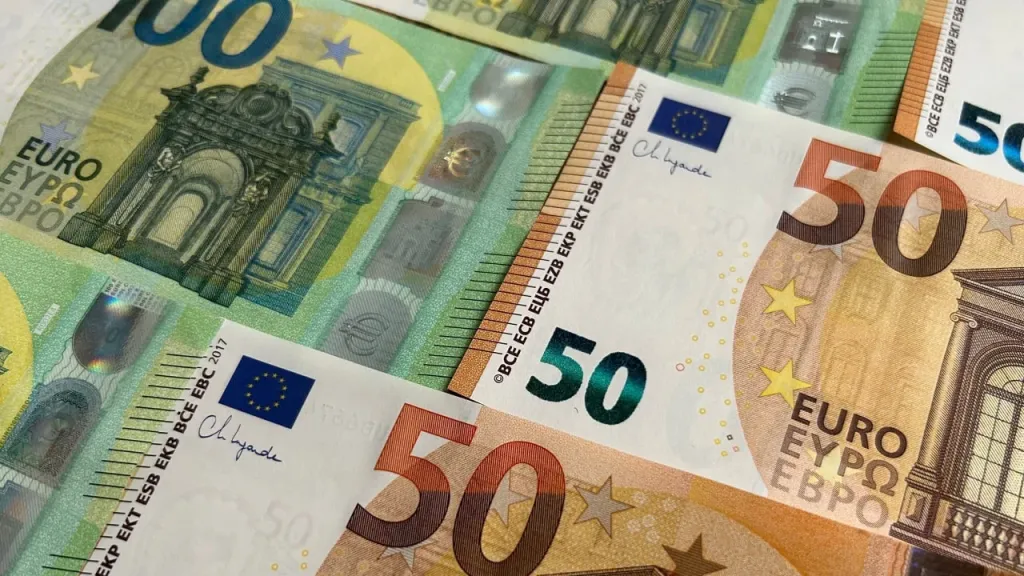"The euro is the new safe haven": traders are leaving the dollar because of duties and US policy
The dollar has fallen more than 7% against major currencies and hit its lowest since 2022: undermining confidence in U.S. assets

Investors have begun to prefer the euro to the dollar more often, statistics of transactions on the options market show. The weakening of confidence in the dollar is largely due to Donald Trump's duties: the value of the U.S. currency has fallen to its lowest level since 2022, while the euro has reached its highest level since 2021. The euro is also beginning to take over from the dollar its traditional role as a safe haven for investors, analysts said.
Details
The euro is gaining importance in the global currency options market. About 15% to 30% of contracts pegged to the dollar against major currencies have been switched to euro settlement, according to a study by Depository Trust & Clearing Corporation, written by Bloomberg.
The data were compared for the first five months of this year with the last five months of last year. On their basis, it can also be concluded that the euro is now used as a safe haven asset (this role was traditionally played by the dollar) and for betting on large market movements, the agency notes.
Why it's happening
While dollar trades still dominate the $7.5 trillion-a-day foreign exchange market, the shift toward the euro may show that the dollar faces more competition as the world's reserve currency, Bloomberg wrote. Traders have been shunning the dollar after its biggest drop in years, and the euro looks a key beneficiary of that while the region's markets are benefiting from multibillion-dollar government stimulus spending, the agency said.
This year, the European currency has appreciated 11% against the dollar and reached its highest level since 2021, surpassing the $1.16 mark. At the same time, the dollar has fallen more than 7% against all major currencies and hit its lowest level since 2022. This undermines confidence in U.S. assets, the publication notes.
Moreover, back in early 2025, the situation was different: the euro was close to parity with the U.S. dollar, and many investors were confident that the dollar would be worth more than the European currency, Bloomberg noted. However, the imposition of duties by U.S. President Donald Trump prompted investors to get rid of dollar assets. U.S. stocks have since recovered, but the dollar's risk premium remains high. To reverse this trend, there needs to be a return of investors to the idea of "U.S. exceptionalism," accounts Tanveer Sandhu, chief global derivatives strategist at Bloomberg Intelligence.
What are the analysts saying?
The dollar's fall against all major currencies isn't over: it could reach 10% over the next year, predicted hedge fund Tudor Investment founder Paul Tudor Jones.
Options market sentiment (risk reversals) is becoming more negative about the dollar versus the Japanese yen, while it is becoming less negative for the euro-yen pair: this is a "really important signal" for the euro, says BNP Paribas SA options strategist Oliver Brennan.
"If we move to a situation where capital inflows into Europe become a more important factor, we could be in a place where it's the currency pairs with the euro that will determine everything,"
While markets doubt the dollar's stability, the euro's implied volatility against the yen looks the calmest in four years compared with the fluctuations in the dollar-yen pair, Bloomberg noted.
"The market believes that the dollar-yen pair will be more volatile than the euro-yen pair in the event of a negative market shock - which is the opposite of how the market has typically reacted to such events in the past. "If this is the case, it means that the market increasingly perceives the euro as a safer safe haven than the dollar," accounted Brennan. He noted that there are simultaneous factors of attraction to Europe and repulsion from the US. The attraction, he said, is reflected in the fact that Europe has potentially safer assets to buy and more growth expectations. And the repulsion is due to uncertainty over duties, risks to "American exceptionalism" and the overall macroeconomic situation.
